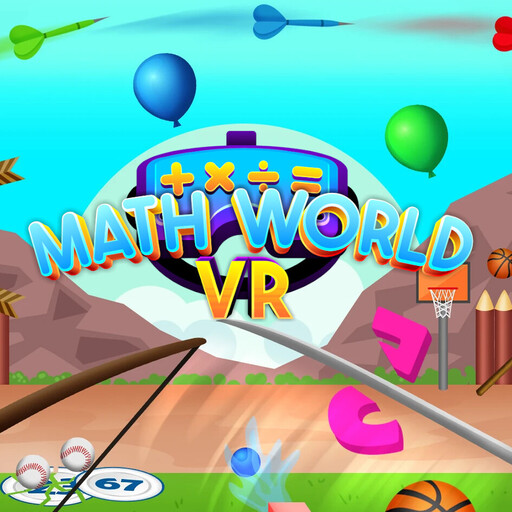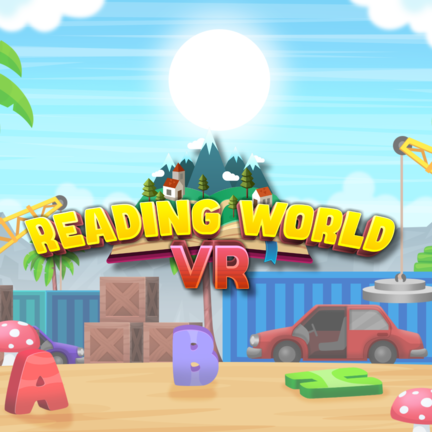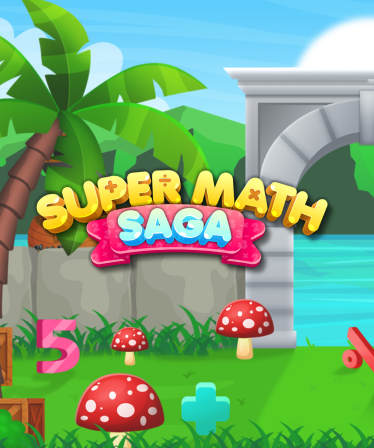Gone are the days when education was confined to textbooks and blackboards. Today, we’re witnessing a significant shift towards interactive learning, where educational games are becoming an integral part of the curriculum. This transformation is not just about making learning fun; it’s about harnessing the power of games to enhance student engagement, improve cognitive skills, and prepare a new generation for the digital future. Educational games, with their unique blend of entertainment and learning, offer a plethora of benefits that traditional teaching methods alone cannot provide.
Enhancing Cognitive Skills through Gameplay
The introduction of gameplay as a learning mechanism marks a pivotal shift from rote memorization to active engagement. By incorporating strategic thinking, creativity, and adaptability into the curriculum through games, educators are unlocking new avenues for cognitive development. Let’s delve deeper into how these elements foster a richer, more dynamic learning environment.
Strategic Thinking and Planning
Games that necessitate strategy and planning not only entertain but also imbue players with the ability to foresee and strategize for future scenarios. Take, for instance, chess or simulation-based games; these platforms require learners to evaluate the current situation, predict potential outcomes, and devise comprehensive strategies. This process mirrors real-life problem-solving, where decisions are not made in isolation but consider future implications and possible responses from others. Such games sharpen the mind, equipping students with the skills to navigate complex problems, manage resources effectively, and understand the consequences of their actions in a controlled, risk-free environment.
Creativity and Innovation in Learning
Open-ended games are the playgrounds of the mind, spaces where creativity is not just welcomed but required. Minecraft, with its sandbox world, offers an excellent example of how games can foster creativity. Players are given the tools to build virtually anything they can imagine, from simple structures to complex machines. This freedom encourages experimentation, pushing students to think outside the box and explore various solutions to self-set challenges. By engaging with such games, learners develop an innovative mindset, becoming adept at thinking creatively in both academic and real-world situations.
Speed of Processing and Adaptability
In a fast-paced world, the ability to think quickly and adapt to new information is invaluable. Fast-paced games, such as reaction-based challenges or time-sensitive puzzles, train the brain to process information rapidly and efficiently. These games require players to make split-second decisions, often under pressure, improving cognitive flexibility and processing speed. This skill is particularly relevant in today’s dynamic world, where change is constant, and the ability to quickly pivot and adapt can define success.
Educational games serve as more than mere distractions; they are potent tools for cognitive development, offering a multifaceted approach to learning that traditional methods may lack. By challenging students to think critically, creatively, and strategically, these games prepare them not just for academic success but for life. As we continue to explore the intersection of gaming and education, it’s clear that the potential benefits are vast and varied. By thoughtfully integrating these games into educational frameworks, we can ensure that learning is not only effective but also engaging and enjoyable for students of all ages.
Through the lens of educational games, we witness a transformation in learning — one that embraces the complexities of the human mind and leverages them for an enriched educational experience. The enhancement of cognitive skills through gameplay is not just a theoretical benefit but a tangible reality, evidenced by the success stories of countless students who have found in games a compelling, effective, and enjoyable way to learn.

Building Emotional Intelligence in the Digital Age
The advent of digital learning tools, particularly educational games, has introduced a novel method for nurturing emotional intelligence among students. This segment of gaming goes beyond mere academic skills, touching on the core aspects of personal development such as resilience, leadership, and the invaluable ability to learn from mistakes. Let’s explore how these games are sculpting the emotionally intelligent leaders of tomorrow.
Resilience and Patience through Collaboration
In the digital playground, multiplayer games stand out as powerful tools for teaching resilience and patience. These games create scenarios where students must collaborate to overcome challenges, mirroring the teamwork needed in real-world situations. Games like puzzle-based adventures or team strategy competitions require players to communicate effectively, delegate tasks, and support each other towards a common goal. This cooperative environment fosters a sense of community and interdependence, teaching students that patience and perseverance are key to overcoming obstacles. Moreover, facing in-game setbacks and challenges in a team setting helps students develop resilience, understanding that setbacks are not failures but opportunities for growth.
Leadership Skills in Virtual Environments
Educational games that simulate real-world scenarios provide a fertile ground for budding leaders. These simulations—ranging from city-building games to virtual economies—place students in decision-making roles where their choices have direct consequences on the game’s outcome. In these roles, students learn to assess situations, make strategic decisions, and manage resources, all while guiding their peers towards achieving collective objectives. Such experiences are invaluable, as they allow students to experiment with leadership styles in a risk-free environment, building confidence and competence that translate into real-world leadership potential.
The Power of Learning from Mistakes
One of the most profound benefits of educational gaming is the creation of a safe space for experimentation and mistake-making. Unlike the high stakes often associated with traditional education systems, games offer a low-risk platform where failure is not only accepted but is also an integral part of the learning process. This environment encourages students to try new strategies, explore unconventional solutions, and ultimately learn from the outcomes of their decisions without fear of judgment or lasting repercussions. Through this process, students develop a growth mindset, viewing mistakes as stepping stones to mastery rather than signs of inadequacy.
Through these digital interactions, students gain a deeper understanding of themselves and others. They learn to navigate complex social interactions, empathize with different perspectives, and communicate more effectively. As they negotiate the challenges and dynamics of virtual teams, they acquire a set of emotional competencies that are increasingly vital in our interconnected, digital-first world.

Integrating Games with Educational Standards
The integration of games into the educational framework represents a significant evolution in teaching methodologies, marking a shift towards a more engaging and effective learning environment. This move is not merely about incorporating play into the classroom; it’s about aligning game-based learning with established educational standards, such as the Common Core, to ensure that the fun of gaming translates into tangible educational outcomes. Let’s delve into how this integration enhances the educational landscape.
Aligning with Curriculum Goals
The core of integrating games into education lies in their ability to mesh seamlessly with curriculum goals, providing an enriched learning experience that goes beyond traditional methods. Educational games are meticulously designed to align with specific learning objectives, covering a wide range of subjects from math and science to language arts and social studies. For instance, a game designed to teach algebraic principles might involve solving equations to progress through levels, offering students a practical and immersive way to understand and apply mathematical concepts.
This alignment ensures that students are not only engaged but are also meeting the same standards expected in traditional learning environments. By incorporating games that complement the curriculum, educators can provide a more dynamic classroom experience that caters to different learning styles and keeps students motivated and interested in the subject matter.
Game-Based Assessments: A New Era of Understanding
Beyond just teaching, games offer an innovative approach to assessment, one that can revolutionize how teachers evaluate student understanding and track progress. Game-based assessments provide immediate feedback, not just to students but to educators as well, through detailed analytics that track individual and class performance. This data can highlight areas of strength and identify topics that may require further instruction, allowing for a more personalized and responsive teaching approach.
Furthermore, these assessments can reduce the stress and anxiety often associated with traditional testing methods. Students who may struggle with pen-and-paper exams can demonstrate their understanding in a more relaxed and engaging environment, potentially leading to a more accurate reflection of their abilities and knowledge.
By integrating games with educational standards, educators are not merely adding an element of fun to the classroom; they are embracing a comprehensive toolset that enhances traditional teaching methods, engages students in their learning journey, and provides a multifaceted approach to education. This approach not only supports the achievement of curriculum goals but also prepares students for success in a rapidly changing world, where adaptability and continuous learning are key.
The Role of Technology in Modern Education
In the educational landscape, technology and gamification are playing pivotal roles in transforming how learning is delivered, experienced, and perceived. By infusing the educational process with technology-driven games and gamified learning experiences, educators are unlocking new pathways to student motivation and preparing students for a future that is increasingly digital.
Increasing Student Motivation through Gamification
The concept of gamification in education—applying game-design elements in learning contexts—has revolutionized the way students engage with their studies. This approach leverages the intrinsic motivation that games naturally evoke, turning learning into a compelling journey rather than a chore. When educational content is gamified, it often includes elements such as point scoring, competition with others, and rules of play, which significantly boost student motivation and engagement.
For instance, a language learning app that uses gamification elements such as levels, points, and rewards for regular practice not only makes learning a new language fun but also encourages consistent engagement, thereby enhancing the learning outcome. Students are more likely to participate actively in their learning process when they feel like they are part of a game, striving to achieve the next level or earn a new badge. This increased motivation directly translates to better engagement with the material, deeper understanding, and improved retention.
Preparing for a Digital Future with Technology-Driven Games
Beyond increasing motivation, technology-driven games serve a critical role in preparing students for careers in STEM (Science, Technology, Engineering, and Mathematics) and digital media. These games often require players to solve problems, think critically, and apply knowledge in virtual scenarios that mimic real-world challenges. As students navigate these virtual environments, they develop not only subject-specific skills but also broader competencies such as digital literacy, computational thinking, and the ability to collaborate across digital platforms.
For example, coding games for children introduce programming concepts in an accessible and fun way, laying the groundwork for future studies or careers in computer science. Similarly, simulation games that replicate scientific experiments or mathematical problems offer hands-on experience with complex concepts, making abstract theories concrete and understandable.
As the world becomes more reliant on technology in every aspect of life and work, the skills that students acquire through technology-driven games will be invaluable. These educational experiences are not just about playing games; they are about building a foundation for future success in a digital world that demands technological proficiency and innovation.
The Transformative Impact of Technology and Gamification
Technology and gamification are more than just trends in education; they are transformative forces that make learning more engaging, effective, and aligned with the needs of the digital age. By incorporating these elements into the educational framework, educators are not only enhancing student motivation but also equipping young minds with the skills, knowledge, and adaptability required to thrive in the future.
As we continue to explore the potential of technology in education, it becomes clear that the integration of digital tools and gamified learning experiences offers a powerful means to enrich education. These innovations promise to keep learning relevant, engaging, and forward-looking, ensuring students are not only prepared for the challenges of the future but are also inspired to meet them head-on.

Evidence of Effectiveness: Analyzing Educational Game Impact
The utilization of educational games within academic settings has increasingly come under the spotlight, driven by a burgeoning body of research and feedback from the educational community attesting to their effectiveness. This section delves into the tangible impacts of educational games on learning outcomes and classroom participation, underscoring their value as a vital educational tool.
Improvements in Learning Outcomes
One of the most compelling arguments for the integration of games in education is the significant improvement in learning outcomes, particularly in core subjects like math and reading. Studies have consistently shown that students who engage with educational games not only grasp concepts more quickly but also retain information longer than their peers who follow traditional learning methods. For instance, a game designed to reinforce algebraic concepts allows students to apply these principles in a variety of contexts within the game, leading to a deeper understanding and mastery of the subject matter.
Moreover, the interactive and often personalized nature of educational games means that they can adapt to the learning pace and style of each student. This adaptability ensures that learners are neither bored by material that’s too easy nor overwhelmed by content that’s too difficult, thereby optimizing the learning experience and outcomes for each student.
Enhanced Participation and Engagement
Beyond academic performance, educational games have a profound impact on student participation and engagement. Educators report a marked increase in enthusiasm and interest in subjects when games are incorporated into the curriculum. This heightened engagement is attributed to the interactive and immersive nature of games, which transform learning from a passive to an active process. Students are not just observers but participants, navigating through challenges, solving problems, and making decisions that influence the outcome of the game.
This active involvement fosters a sense of ownership over the learning process, motivating students to participate and invest more effort in their education. Furthermore, the collaborative aspect of many educational games encourages teamwork and communication among students, enhancing the social dynamics of learning and making the classroom a more inclusive and engaging environment.
The Verdict from the Educational Community
The positive reception of educational games within the educational community further reinforces their efficacy. Teachers appreciate the versatility of games as teaching tools that can complement and enrich traditional teaching methods. They note an improvement in classroom dynamics, with students more willing to engage in discussions, ask questions, and collaborate with peers.
Parents, too, have observed a change in their children’s attitudes towards learning, with many reporting increased enthusiasm and curiosity about subjects explored through games. This shift is particularly significant in areas previously considered challenging or uninteresting by students, highlighting the potential of games to transform perceptions and attitudes towards learning.

Navigating the Challenges of Game-Based Learning
The integration of game-based learning into educational settings offers a transformative approach to education, engaging students and enhancing learning outcomes in unprecedented ways. However, as with any educational innovation, there are challenges that must be navigated to ensure the efficacy and inclusivity of game-based learning. Addressing these challenges head-on is crucial to ensure that the educational value of games is fully realized without being diluted by entertainment alone.
Balancing Educational Value with Entertainment
A primary challenge in implementing game-based learning is maintaining a balance between educational content and entertainment. The allure of games lies in their ability to captivate and engage, but this engagement must not come at the expense of learning objectives. To navigate this, educators and game designers must collaborate to create games that are not only fun but also aligned with educational standards and learning outcomes. These games should have clear objectives, structured feedback, and adaptability to different learning styles and paces, ensuring that entertainment facilitates, rather than detracts from, learning.
Ensuring Accessibility for All Students
Accessibility remains a significant challenge in the widespread adoption of game-based learning. Disparities in access to technology can exacerbate existing educational inequalities, with students from underprivileged backgrounds potentially being left behind. Addressing this requires concerted efforts from educators, policymakers, and the community to ensure that every student has access to the necessary technology. This may involve investing in school infrastructure, providing devices for home use, or implementing low-tech solutions for game-based learning that can be accessed through basic digital devices.
Moreover, the design of educational games themselves must consider diverse learners, including those with disabilities. Games should be built with accessibility in mind, featuring customizable interfaces, adjustable difficulty levels, and support for different learning needs. By prioritizing accessibility in both the physical and design aspects of game-based learning, educators can create an inclusive environment where all students can benefit from the interactive and engaging nature of educational games.
Careful Selection of Educational Games
With a vast array of games available, selecting the right educational games that meet curriculum goals and learning objectives is crucial. Educators need to critically assess games for their educational content, alignment with curriculum standards, and suitability for their students’ age and skill levels. This selection process requires time, resources, and a deep understanding of both the subject matter and the educational potential of games. Professional development opportunities for educators can equip them with the skills to evaluate and integrate games effectively into their teaching practice.
By addressing these challenges through thoughtful planning, resource allocation, and ongoing evaluation, the potential of game-based learning can be fully unlocked. This approach ensures that educational games are not just an addition to the curriculum but a valuable tool that enhances learning, fosters engagement, and prepares students for the challenges of the future. In doing so, we can maximize the benefits of game-based learning, making education more accessible, engaging, and effective for all students.
Conclusion
The integration of games into education represents a significant shift towards a more interactive, engaging, and effective learning experience. As we continue to explore and innovate, the potential of educational games to transform the educational landscape is limitless. Let’s embrace this change, recognizing the incredible benefits that games bring to education, and continue to unlock the potential of every student.









